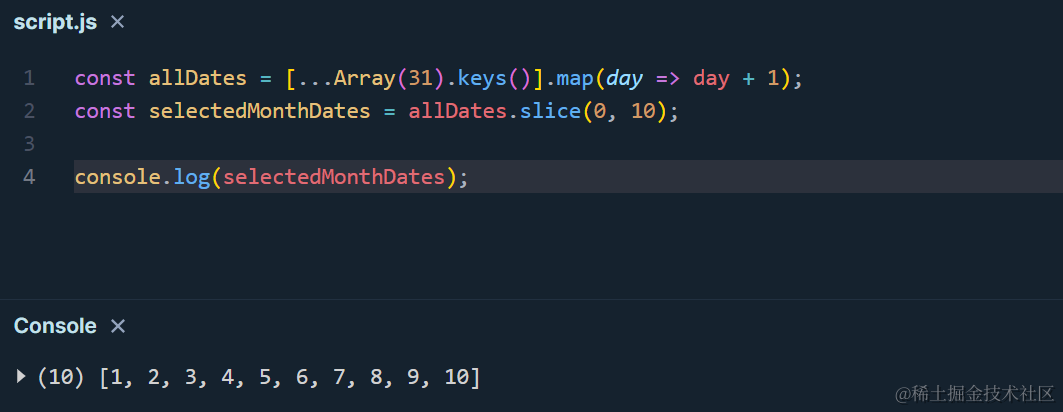InJavaScript, slice() is a commonly used array method for extracting data from an existing array. Extracts a subset of elements and returns a new array. It is a very useful tool that helps you manipulate subsets of an array without changing the original array. This article will introduce the basic concepts, usage methods, practical cases and interactive exercises of slice() to help you better understand and master this powerful method.

slice() basic concepts
In many cases, you may need to extract a specific range of elements from an array without changing the original array. This is where the slice() method comes in. It accepts two parameters: starting index and ending index (not included in the extraction range). By specifying these two parameters, you can easily create a new array containing a specified range of elements from the original array.
Its syntax is:
array.slice(begin, end)
Parameter Description:
begin:extractionIndex of starting position (starting from 0)end:extractionThe index of the ending position (but not the element itself at that position)
How to use slice()
In JavaScript, the slice() method has two common uses:
1. Extract elements from a specified range
const originalArray = [1, 2, 3, 4, 5];
const newArray = originalArray.slice(1, 4);
console.log(newArray); // 输出: [2, 3, 4]
In the above example, originalArray is the original array and we used slice(1, 4) to extract the elements between index 1 to 3 (excluding index 4 ), and then created a new arraynewArray.
2. Copy the entire array
You can also use slice() to copy the entire array:
const originalArray = [1, 2, 3, 4, 5];
const newArray = originalArray.slice();
console.log(newArray); // 输出: [1, 2, 3, 4, 5]
This way, newArray will become a copy of originalArray.
Practical cases
Let's look at a practical case. Suppose you are developing a web application and need to display the dates of the first few days of a certain month. You can use the slice() method to extract a specified range of dates from a pre-generated date array.
const allDates = [...Array(31).keys()].map(day => day + 1); // 生成 1 到 31 的日期数组
const selectedMonthDates = allDates.slice(0, 10); // 提取前 10 天的日期
console.log(selectedMonthDates); // 输出: [1, 2, 3, 4, 5, 6, 7, 8, 9, 10]

interactive exercises
1. Extract the elements between index 1 and 3 in the array [5, 10, 15, 20, 25]. What is the result?
Answer:
[10, 15]
2. Please use the slice() method to copy the array [2, 4, 6, 8, 10] to a new array, and name the new array copiedArray.
Answer:
const originalArray = [2, 4, 6, 8, 10];
const copiedArray = originalArray.slice();
Tips and Notes
slice()The method does not modify the original array, but creates and returns a new array.- If no argument is provided,
slice()copies the entire array. - Both the start index and the end index can be negative, meaning counting starts from the end of the array.
- The end index can be greater than the length of the array,
slice()will truncate at the end of the array.
Summarize
slice() is a powerful method in JavaScript for extracting fragments of an array. By specifying the starting index and ending index, you can create new subarrays for various operations and scenarios. Not only does it help you easily work with subsets of an array, it also keeps the original array unchanged. Once you master the slice() method, you will be more confident in manipulating and processing array data.
Knowledge expansion:
- How to use the setTimeout function of JavaScript (JS)? An article explaining the usage of setTimeout function
- How to use the indexOf method of JavaScript (JS)? An article explaining the usage of indexOf
Reference links:
- MDN Web Docs - Array.prototype.slice():Array.prototype.slice() - JavaScript | MDN